In the latest in our Albums For The Ages series we celebrate the forty-year-plus career of New York metal icons Anthrax; As usual we called upon our diverse panel of metal experts (and the Sentinel Daily writing staff) from across the globe and quizzed them on their opinions as to just what the ten best Anthrax albums of all time are; they deliberated, they cogitated, some refuse point blank to answer unless financial blandishments were made… but in the end we managed to come up with this list – Ladies and gentlemen – we give you the Anthrax Albums for the Ages…
10. Volume 8 – The Threat Is Real (Ignition)
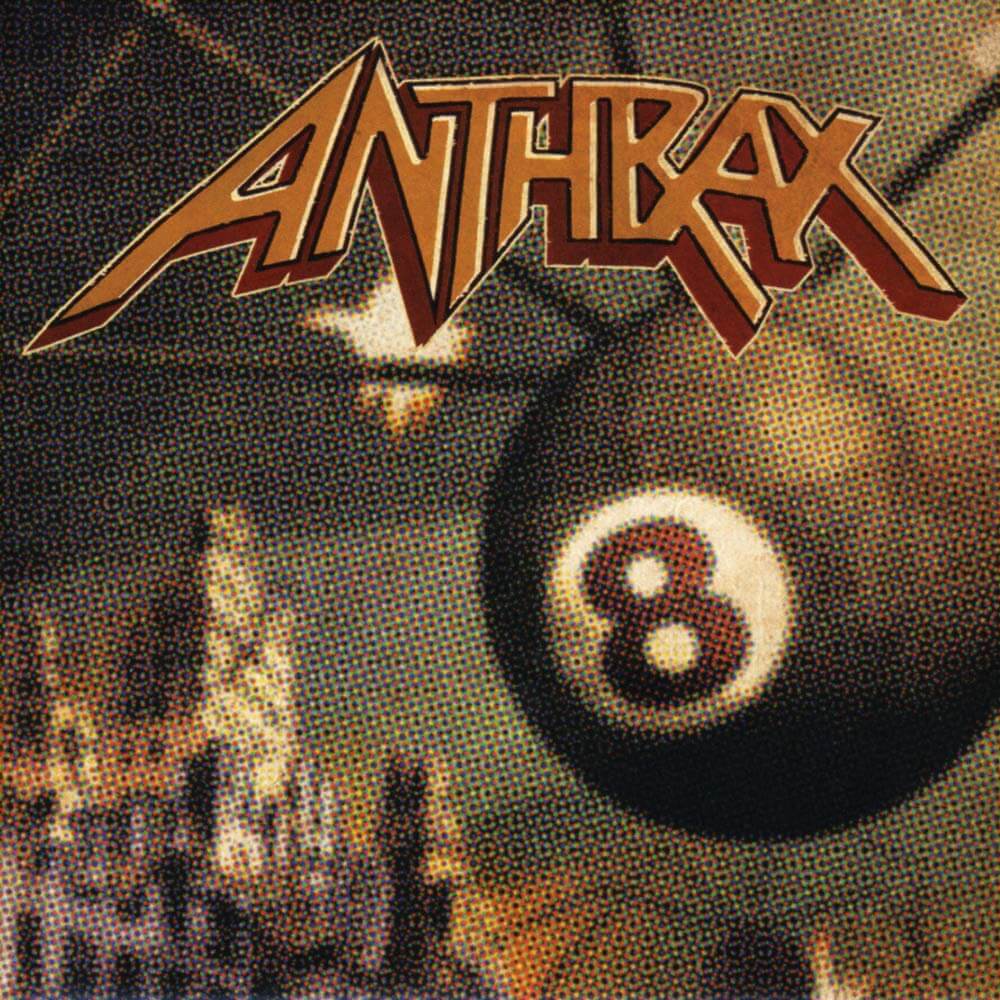
Anthrax’s ‘hard times’ record saw them reacting to their downturn in fortunes in the only way they knew how – by making a killer album. Charlie Benante‘s spectacular drumming on opening track Crush gave a hint at the sheer heaviness and intensity that was to come, and over the course of the album’s sprawling fifteen track the band repeatedly rammed home the fact that, even if it seemed the world at large was falling out of love with them, they weren’t falling out of love with making bone-crunching heavy metal. Scott Ian and Paul Crook pour on the pain in the guitar department doom-groove behemoths like Stealing From A Thief, and of course front and centre there’s a prime slab of John Bush vocalisation; the man had risen from a throat debilitating fever to record the album, not that you’d ever know. And of course, there’s also Frank Bello‘s moving paean to his fallen brother in the shape of the grungy, tear-jerking hidden track pieces. The album sank without trace due to label Ignition going tits up, so at the time it wasn’t heard enough to even be underrated. But now? I like to think it’s starting to get the acclaim it deserves. –Michael Stronge
9. We’ve Come For You All (Nuclear Blast)
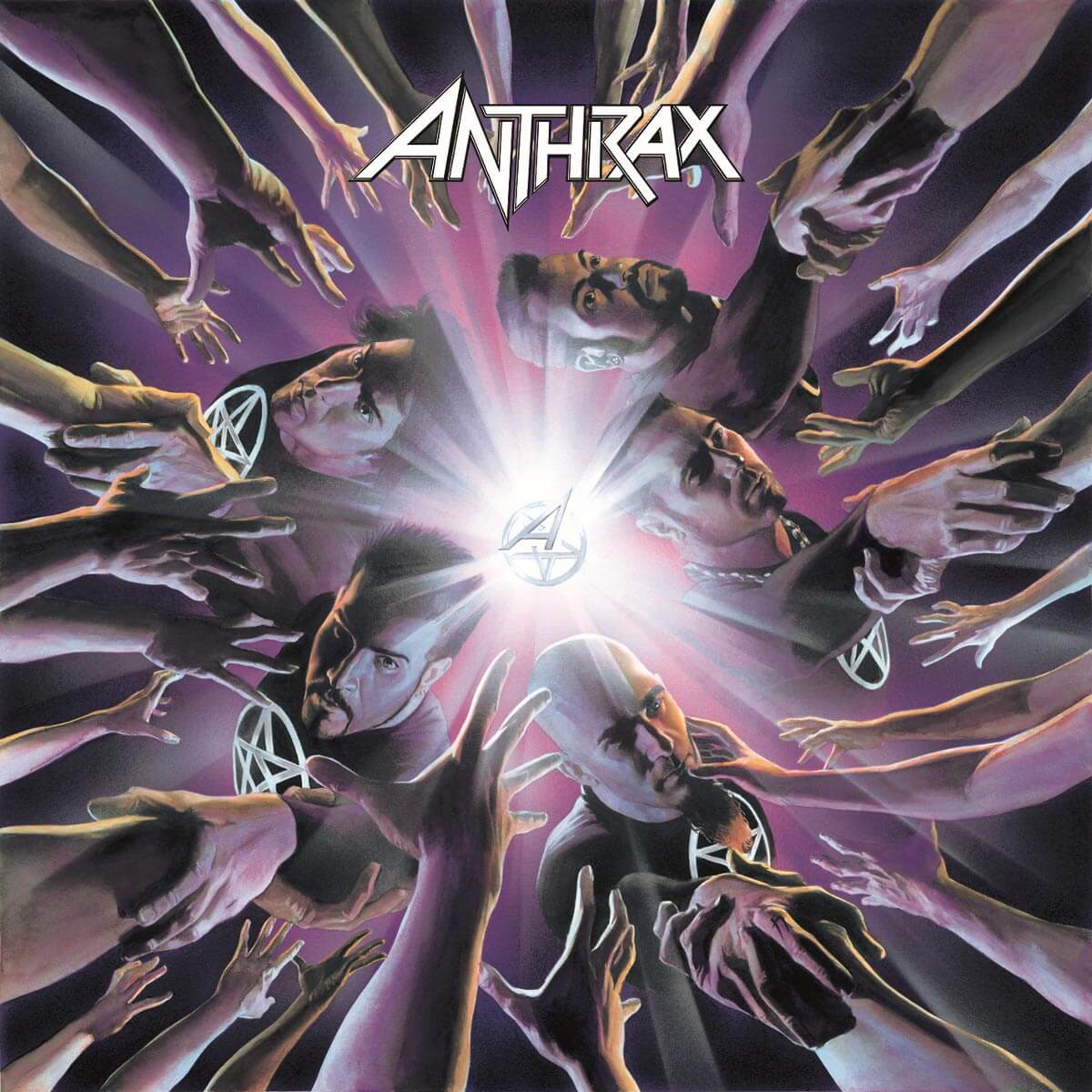
‘The comeback’ album for new label Nuclear Blast promised much but didn’t quite deliver despite the continued presence of Dimebag Darrell and new celebrity pal Roger Daltrey.
That said, as with much Anthrax material of the nineties and early noughties, when the band hit their stride, as they did on radio rocker Safe Home and the glorious Persistence… throwback What Doesn’t Die, then heavy metal hi-jinx are never far away. John Bush‘s swansong with the band as far as original material is concerned is never less than convincing, vocally, and at the time of release it was just great to be listening to new material from the band, but for this reviewer listening back now, there’s a little too much bandwagoneering going on here for WCFYA to be regarded as a bona fide classic piece of Anthrax. – Gavin Strickmann
8. Stomp 442 (Elektra)
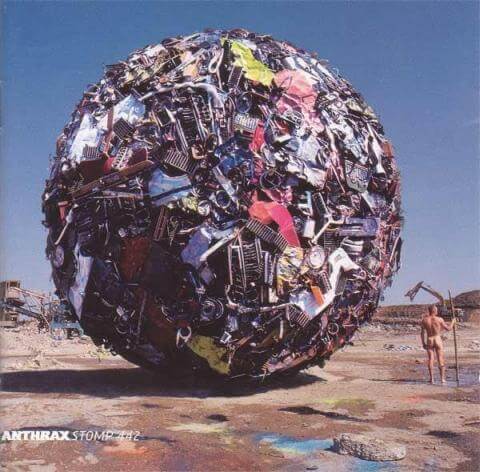
Stomp 442 is a largely graceless collection of faceless, empty rifferama, all oafish bluster with nothing to back up the grandstanding sturm und drang. The band complained about lack of support from label Elektra, but it’s hard to see what the label could do with such a tiresome set of tracks. Opener Random Acts of Senseless Violence sets the tone, Bush doing a passable Steven Tyler impression over the top of the sort of directionless Pantera-lite guitar work that’s a trademark of the Anthrax wilderness years – Dimebag Darrell himself contributes lead to third track King Size on this album without sprinkling the song with any great amount of stardust – and things don’t really get any better from that inauspicious starting point. Singer John Bush is never less than fully committed – he’s undoubtedly the star of this show – and the occasional riff does stick out from the morass (American Pompei, featuring Powerman 500’s Mike Tempesta, might just about crawl onto the end of side two of a ‘best of’ release), but overall Stomp 442, in this reviewer’s opinion at least given it’s position at number eight in our poll, marks the nadir of Anthrax’s career to that point. – Scott Adams
7. Worship Music (Nuclear Blast)
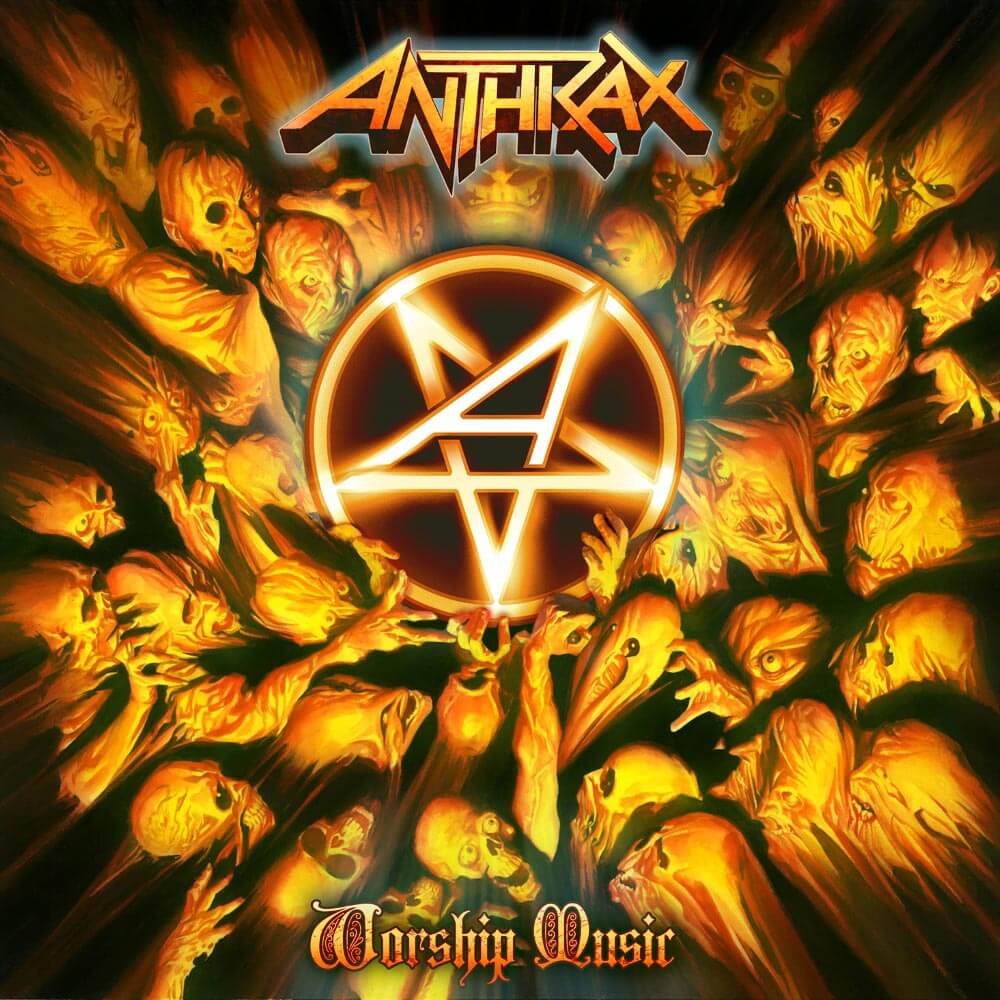
With the revitalising effect the year of Big 4 shows seemed to have had on Anthrax it is perhaps a little surprising that there was hardly any true thrash metal in evidence on Worship Music, but that should only be a disappointment to you if you’d convinced yourself that the return of ‘classic’ vocalist Joey Belladonna meant an unconditional return to the past. If that’s not you, then you are going to have a good time with this album – a very good time.
Put simply, the first half of Worship Music is out and out classic Anthrax. Starting with the gruffly attractive Earth on Hell, the album roars into life with a snap and a bite we hadn’t heard from the band in years. As if that wasn’t good enough they then weighed in with the radio friendly singalong Devil You Know and the gargantuan, titanic monstrosity that it Fight ‘Em Till You Can’t. A heady call to arms to all humans in the face of Zombie aggression it was, not to put too fine a point on it, the best self-penned Anthrax song since the days of Among the Living at it’s time of release.
Time hasn’t been so kind to some of the other material, but overall this was the return that Anthrax needed to make with Belladonna. – SA
6. Sound of White Noise (Elektra)
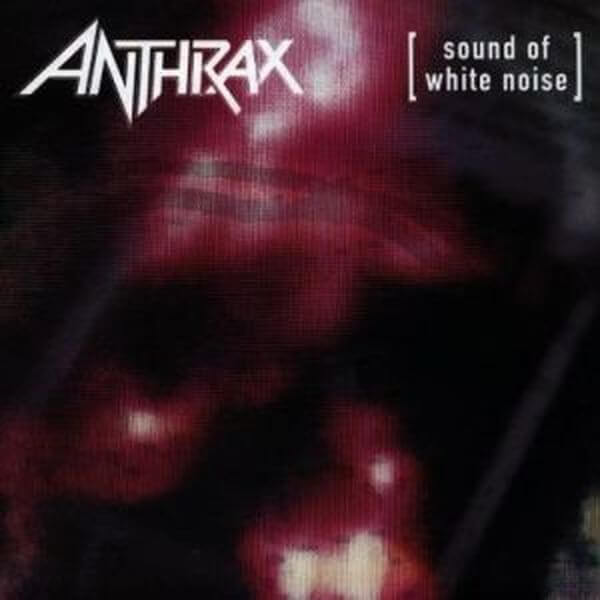
1993’s Sound of White Noise was something of a year zero for Anthrax; The importation of Armored Saint’s John Bush into the lineup at the expense of the increasingly ludicrous Joey Belladonna, the more or less total shedding of their thrash skin in favour of an altogether more de jeur alt. metal sound and the easing out slowly of lead guitarist Dan Spitz all combined to throw the band into something of a state of flux, a flux which against the odds forced them into a white-hot creative maelstrom that left them in possession of something of an unexpected classic.
Perhaps not that unexpected; previous album Persistence of Time continued the darkening process in the band’s sound that 1988’s State of Euphoria had begun, leaving both Belladonna and Spitz increasingly out on a limb. By 1993 neither were needed, although Spitz is credited as lead guitarist on this album. By the time the SoWN tour rolled through the UK future Meat Loaf musical director Paul Crook was handling all the lead work.
The new, less melodious style suited Bush down to the ground, his leather-lunged bellow fitting right in with soon-to-be-classics like Only and Sodium Pentathol, his more abrasive style naturally more suited to jagged material like Hy Pro Glo than Belladonna’s reedy warble. Indeed, single Only was so good it was pronounced a ‘perfect song’ by none other than James Hetfield, and when you throw ambitious material like the cinematic Twin Peaks tribute Black Lodge into the mix as well, you’ve actually got an album that’s starting to look like a minor classic. Producer Dave Jerden adds a modern sheen to the dependably groovy Charlie Benante riffage, in the process streamlining the sound so that even slightly bloated fare like This is Not an Exit ends up sounding dynamic and crunchy. A top 10 placing in the Billboard Top 200 album listing was proof that the band had reaped the rewards of their on-the-face-of -it risky career moves. – SA
5. State of Euphoria (Megaforce Records)
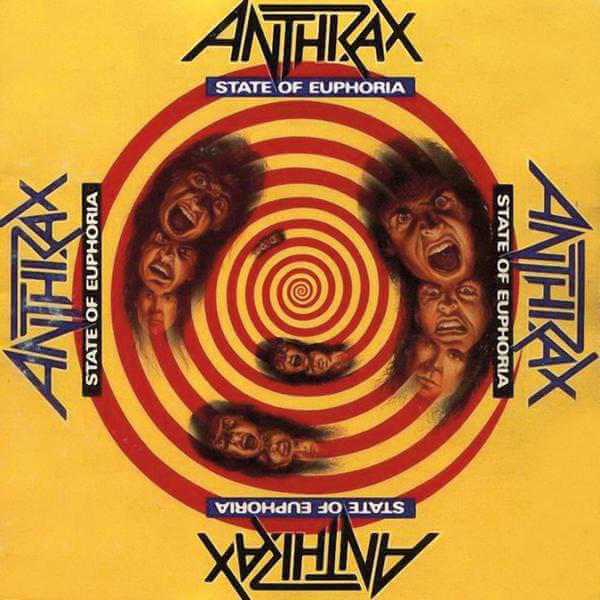
After the unprecedented success of Among The Living, Anthrax found themselves at a crossroads; Having saddled themselves with a fun-loving, ‘whacky’ image at odds with the increasingly dark nature of the music they were writing, the band partially remade themselves on State of Euphoria, in the process bridging their early career and the full-on grinding heaviness that was to come.
Consequently there’s nothing here with the immediate street appeal of Madhouse or Indians; that particular piece of slack was taken up by the band’s now-legendary cover of Trust‘s Antisocial; what there was, however, was a great deal of grim faced chugging, which was largely successful early on in the running order (Be All, End All and Out of Sight, Out of Mind are both relentless headbangers right out of the Anthrax top draw), but ran out of steam somewhere towards the end of side two.
As a transition album State of Euphoria was a success, pointing the way to what was to come on Persistence of Time and beyond. – MS
4. Persistence of Time (Island)
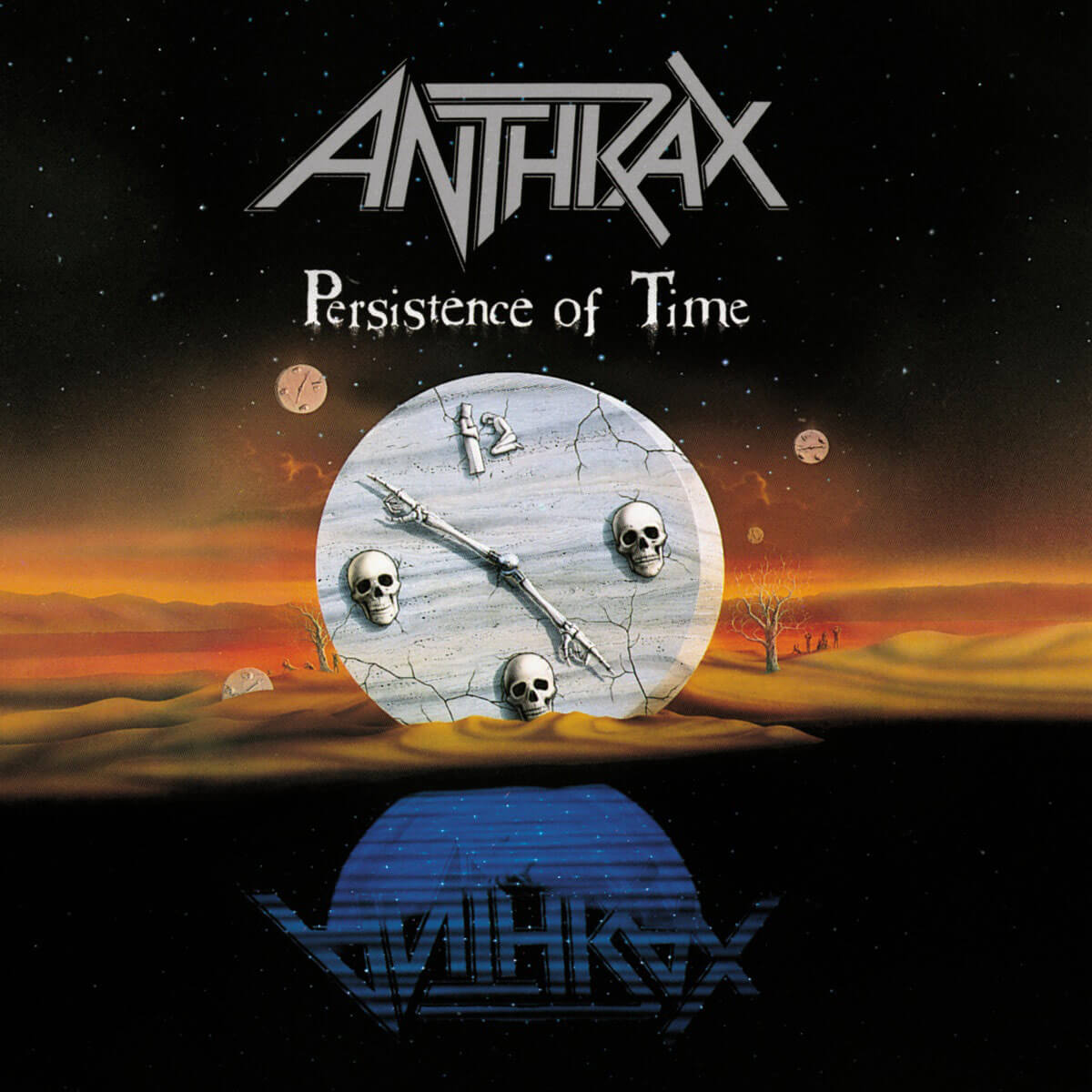
The end of an era; Anthrax’s first album of the nineties was also their last with Joey Belladonna until basic economics dictated his return nearly twenty years later for the Big 4 Extravaganza. And it’s easy to see now, with the benefit of hindsight that he’s a marginalised figure on this, his at-the-time swansong. Not that he sings badly – his performance throughout is actually pretty good, benefitting from a tight production courtesy of Mark Dodson – but this is material that isn’t really ‘his’. In fact, fun-time cover of Joe Jackson‘s Got The Time apart, PoT sees Anthrax’s creative mainsprings Charlie Benante and Scott Ian retreating into themselves, creating a dark otherworld where the riff is king and relentless drumming his prince regent. For Anthrax fans brought up on comic book metal like Lone Justice and I Am The Law it was quite hard to swallow, but listening to the album at thirty years remover the propulsive likes of Blood and Discharge make perfect sense.
This was Anthrax’ coming of age album, and like all comings of age it was fraught with pain and discomfort. But the result, perhaps the band’s most well-rounded and ‘complete’ sounding record, made all the pain worthwhile. – GS
3. Fistful of Metal (Megaforce Records/Music For Nations)
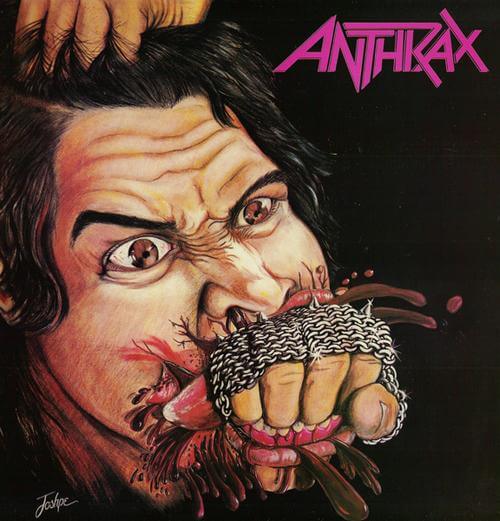
From that opening noise that kicks off Deathrider, through the glorious heavy metal thunder of Panic (a song that still resides in this writer’s personal all-time top ten to this day) to closing belter Howling Furies, Fistful of Metal was, well, just that really. For legions of kids who’d suckled at the heavy metal teat of Maiden and Priest and yet yearned for something harder and faster whilst being still demonstrably metal, FoM was like manna from heaven. Vocalist Neil Turbin packed the requisite punch and was able to hit Halford-approved high notes to boot, whilst Dan Spitz and Scott Ian seemed like metal’s next guitar duo from the Gods with their nifty interplay and readiness to indulge in fast-paced harmony lead mayhem.
Always unfairly judged on it’s appalling cover alone, Fistful of Metal never, to my mind, got the recognition it deserved. Even at the venerable old age of thirty eight, tracks like Subjugator still possess the power to get old headbangers banging, whilst Metal Thrashing Mad – the song that kickstarted a genre – sounds as fresh as it did the day I brought it home from Shades Record Shop in London a lifetime ago. The best metal is timeless – and this album contains some of the most timeless of all. – SA
2. Spreading The Disease (Music For Nations)
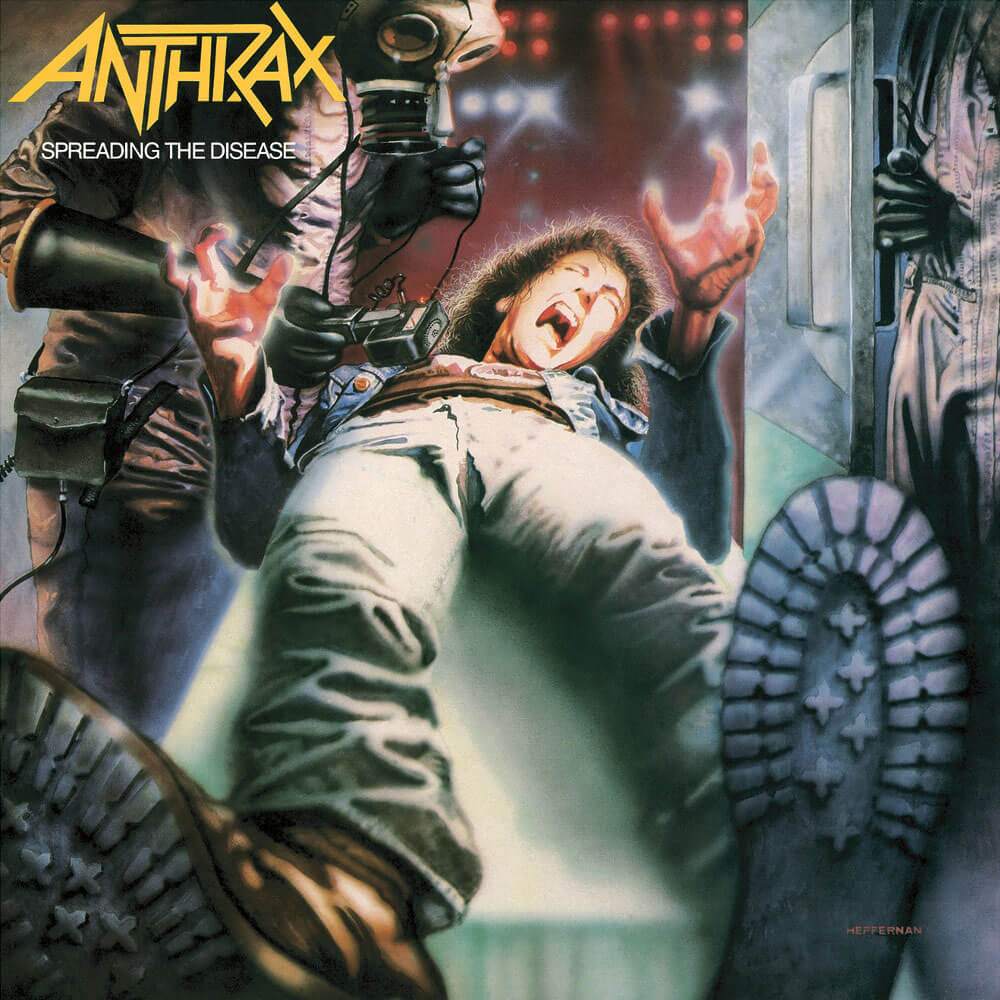
After the pure metal assault of debut Fistful of Metal, Anthrax took a step back, ditched the stage armour and embraced their inner hardcore band. Along the way they also made the key step of co-opting Joey Belladonna into the fold, in the process fully personalising their sound; gone were the Priest and Maiden tropes, to be replaced by something even harder, faster but, most importantly, more raw and down-to-earth. And whilst tracks like Medusa and The Enemy still had an undeniable ‘classic’ metal edge, it was the fast-paced likes of opener A.I.R., Stand or Fall and Gung Ho that hit hardest. They might have played with the idea of thrash on their debut – here they began to embody it.
Elsewhere single Madhouse was the first in a long line of snappy singalonogajoey anthems, yes, but it was built on the hulk of a massive riff that reminded you that, though the chorus was pure showbiz, the song was rooted in something more substantial. This mix of an almost pop nous and grindingly heavy metal was to serve Anthrax well in the not too distant future. Spreading the Disease sees the band establishing the formula that they would see through to success on next album Among The Living, but that doesn’t stop it from being a very fine album in it’s own right. – Ferry Templeton
1. Among The Living (Megaforce/Island)
Could there really have been another number one? Shifting to major label Island gave the band the promotional heft they needed to take the step up that Spreading The Disease suggested the band were capable of, but that wasn’t the only factor – the little matter of killer tunes came into play as well…
Despite the comic book silliness that dwelt in the never-far-away shadows constantly, the shorts and the Ramones-styled NOT! idiot boards, Among The Living proved that Anthrax were a band that could write a stadium-levelling metal Tune just as well as their heroes could; The title track, the titanic I Am The Law, Skeletons In the Closest, Caught In a Mosh… this was real, living, fire-breathing heavy metal right out of the top drawer.
Legendary producer Eddie Kramer gave the band the opulent sound their songs deserved, and, to a starry-eyed Welsh metalhead like me seeing the band for the first time on this tour at the Colston Hall in Bristol in 1987 it seemed like the World was at the feet of Scott Ian and company.
It didn’t quite work out like that, of course, and the band would never quite juxtapose creativity and commercial appeal quite so well again; and, though some would claim primacy for later works as being more aesthetically pleasing, it can’t be denied that, for a short moment of time in 1987 Anthrax were just about the top of the heavy metal tree with ATL. – GS


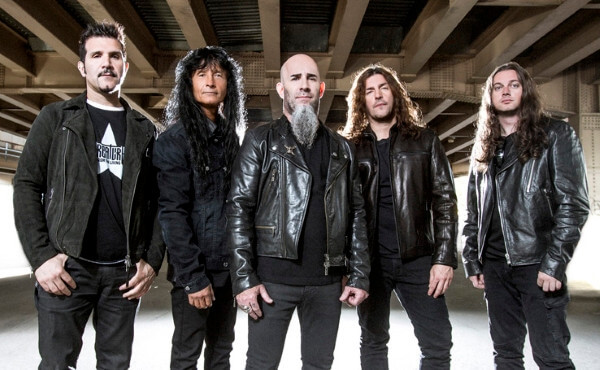
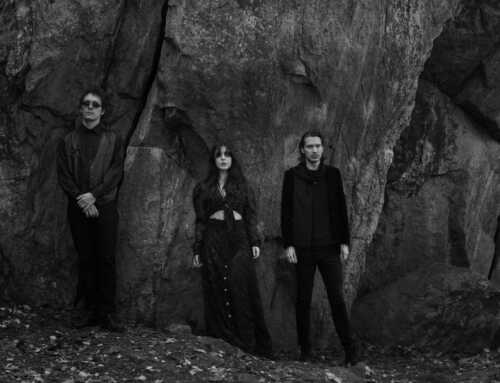

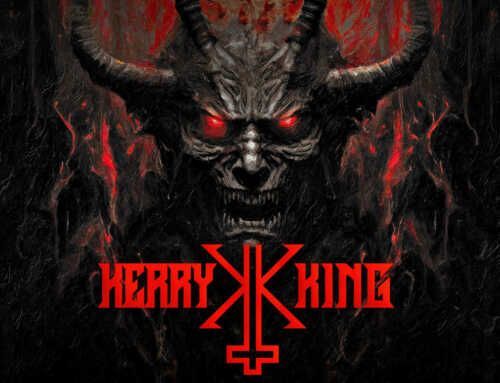
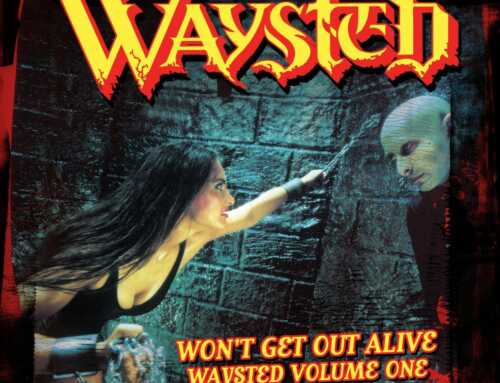
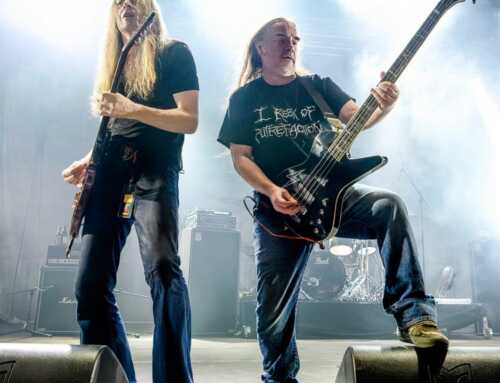
Leave A Comment